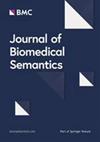Aspect and Thematic Roles
IF 1.6
3区 工程技术
Q3 MATHEMATICAL & COMPUTATIONAL BIOLOGY
引用次数: 2
Abstract
In this work, I propose a new semantic analysis of the Japanese progressive/resultative morpheme -te iru, which also leads to an improved account of the English progressive and contributes to cross-linguistic theory of aspect. The proposal is based on the modal analysis of the English progressive proposed by Portner (1998) and Ferreira (2016), but it is modified to accommodate the Japanese data. Crucially, the target state (resultative) reading of -te iru is available when the subject entity is a theme/undergoer; this is not controlled by the length of the event being described. To implement this idea, this work develops a formal system in which each thematic role predicate has its own temporal argument, and this time does not necessarily equal the temporal trace of the event in question. Specifically, a theme bears the target state role associated with an event e at a time that immediately follows the temporal trace of e. In addition, to describe and explain the behavior of -te iru, the traditional idea of “inertia worlds” according to which the relevant possible worlds are identical up to the utterance time is modified to allow them to differ in the past as well as in the future. It is noted that this modification is justified for the English progressive as well as for the Japanese -te iru form. This proposal allows us to predict that the behavior of achievements in English and Japanese is alike in simple past sentences and nominalized cases, but differs from each other in sentences containing the aspectual morphemes in question.方面和主题角色
在这项工作中,我提出了一种新的日语进行/结果语素- iru的语义分析,这也导致了对英语进行时的改进,并有助于跨语言的体理论。该建议是基于Portner(1998)和Ferreira(2016)提出的英语进行式的模态分析,但对其进行了修改以适应日本的数据。至关重要的是,当主体实体是主题/接受者时,- iru的目标状态(结果)阅读是可用的;这不是由所描述事件的长度所控制的。为了实现这个想法,这项工作开发了一个正式的系统,其中每个主题角色谓词都有自己的时间参数,这个时间不一定等于所讨论的事件的时间轨迹。具体来说,主题承担着与事件e相关的目标状态角色,该事件e紧跟时间轨迹e。此外,为了描述和解释- iru的行为,“惯性世界”的传统观念被修改,根据该观念,相关的可能世界在话语时间之前是相同的,允许它们在过去和未来有所不同。值得注意的是,这种修改对于英语的进行式和日语的- the iru形式都是合理的。这一建议使我们能够预测英语和日语中成就的行为在一般过去句和名词化情况下是相似的,但在包含所讨论的方面语素的句子中却不同。
本文章由计算机程序翻译,如有差异,请以英文原文为准。
求助全文
约1分钟内获得全文
求助全文
来源期刊

Journal of Biomedical Semantics
MATHEMATICAL & COMPUTATIONAL BIOLOGY-
CiteScore
4.20
自引率
5.30%
发文量
28
审稿时长
30 weeks
期刊介绍:
Journal of Biomedical Semantics addresses issues of semantic enrichment and semantic processing in the biomedical domain. The scope of the journal covers two main areas:
Infrastructure for biomedical semantics: focusing on semantic resources and repositories, meta-data management and resource description, knowledge representation and semantic frameworks, the Biomedical Semantic Web, and semantic interoperability.
Semantic mining, annotation, and analysis: focusing on approaches and applications of semantic resources; and tools for investigation, reasoning, prediction, and discoveries in biomedicine.
 求助内容:
求助内容: 应助结果提醒方式:
应助结果提醒方式:


